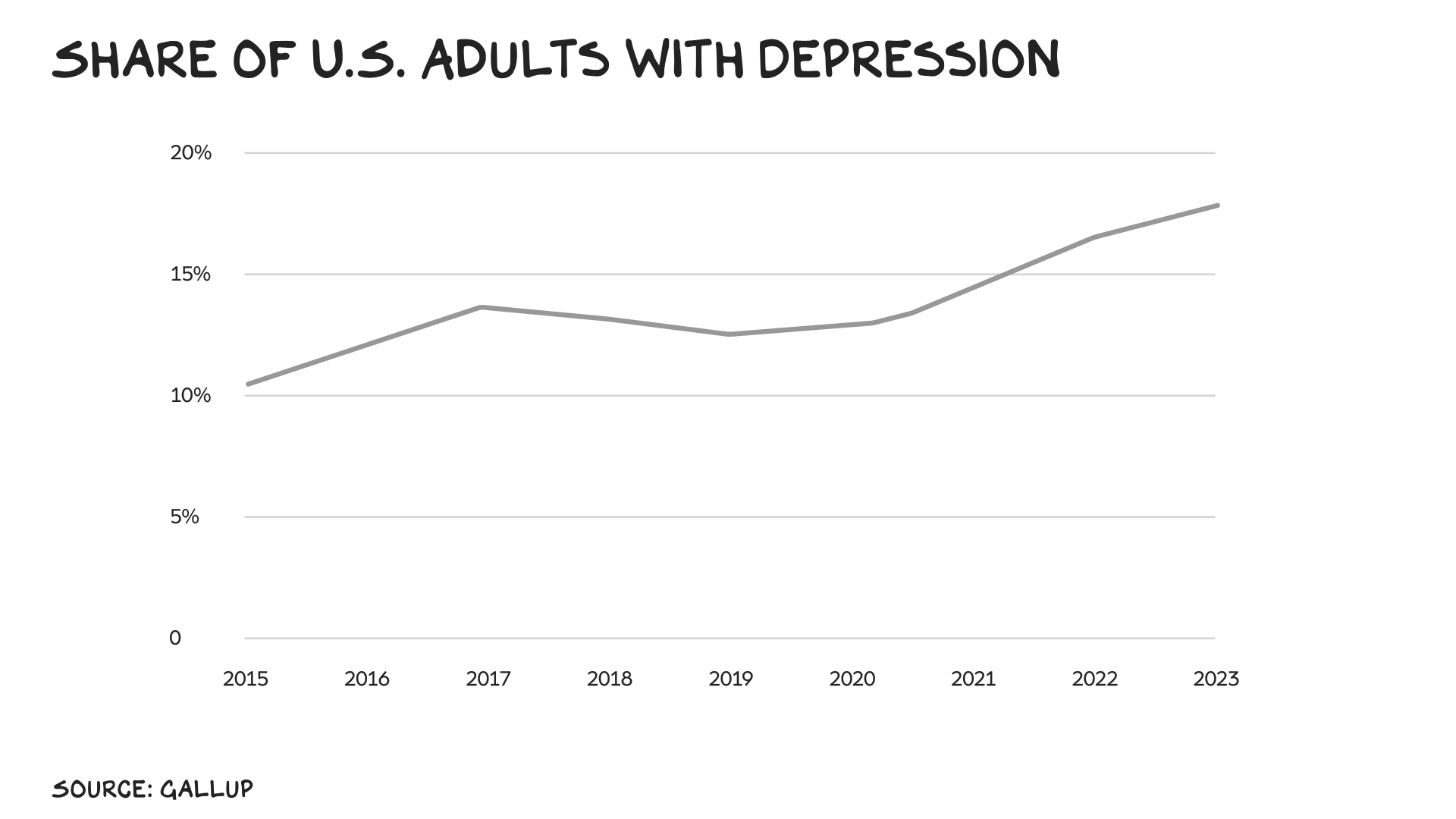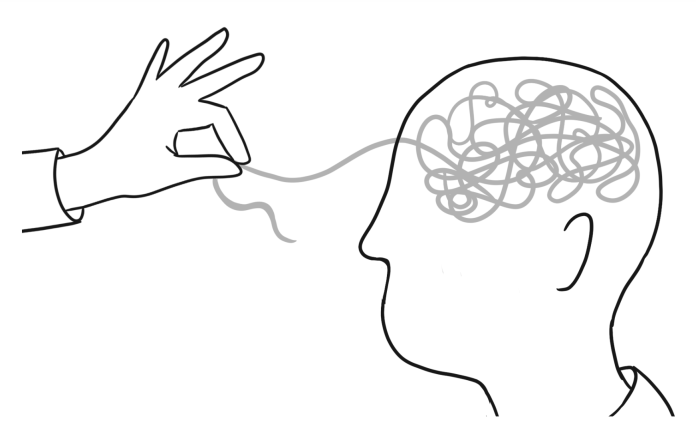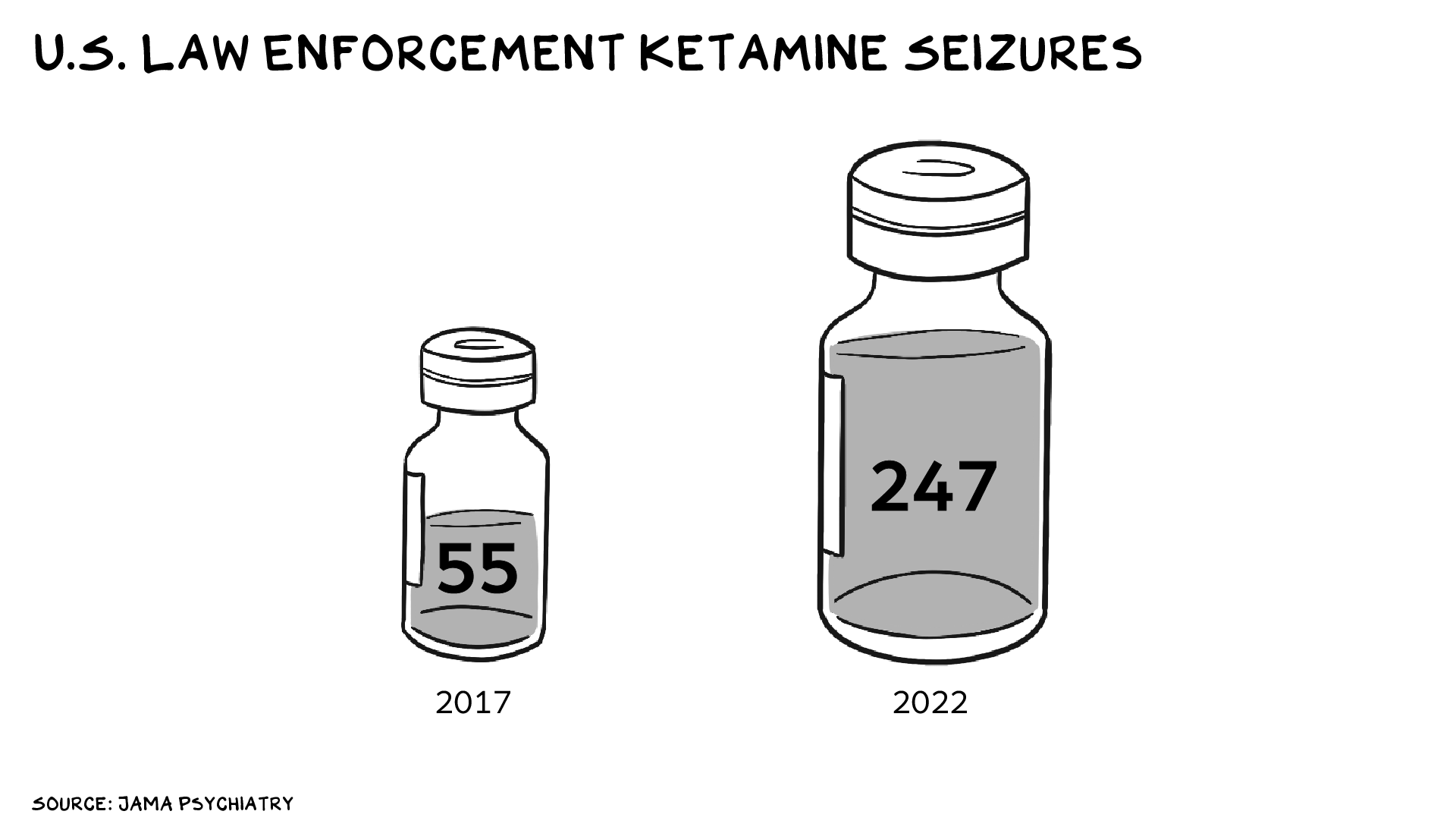Prof K
-
Audio Recording by George Hahn
I experienced ketamine therapy a few weeks ago and, after discussing it on Pivot and Prof G pods, I’ve received a great deal of inquiries from friends, strangers, and media. I wanted to let the experience settle as my perception continues to evolve/mature/unfurl (couldn’t find the right word), and to take advantage of Daniel Kahneman’s advice to employ our “slow thinking.” I was also inspired to do some research on the background and technology of the craft I traveled on, and the drug an increasing number of people are using … in a variety of settings. Anyway, here goes.
Anesthetic
Ketamine was developed as a surgical anesthetic. It replaced PCP — yes, that PCP — which was effective, but patients frequently emerged from unconsciousness confused and sometimes hallucinating, a state known as “emergence delirium.” Scientists modified the compound until they hit on a variation that had similar anesthetic properties but with less risk of psychedelic side effects. First synthesized in 1962 and tested on Michigan state prisoners in 1964, ketamine remains in widespread use as an anesthetic today.
Ketamine produces less emergence delirium than PCP, but it does have that effect, and in the 2000s, researchers started looking more closely at the unusual phenomenon. The “dissociative state” is characterized by a sense of detachment from reality and one’s physical self, or even consciousness. Dissociation can occur without drugs — psychotic hallucination is a type of dissociation — but the particular sense of detachment from the self that ketamine produces (and other psychedelics such as psilocybin and LSD can produce) turns out to be a potentially powerful tool. It can enable personal growth as well as enhance artistic and intellectual expression. Research interest in this phenomenon opened the door to a broader insight: While the mechanism is not yet fully understood, there is growing evidence that at sub-anesthetic doses, ketamine can help resolve serious mental health conditions, including anxiety, bipolar disorder, PTSD, and depression.
Depression
The most thoroughly studied and accepted therapeutic use of ketamine is for treating depression and, in particular, treatment-resistant depression. Depression is a modern scourge. It afflicts an estimated 280 million people worldwide, and nearly 18% of U.S. adults report they are currently in treatment for depression — up from just 10% a decade ago. Depression factors into two-thirds of suicides, killing over 30,000 Americans per year. Antidepressants are effective for many but are ineffective or bring major side effects for others — around a third of patients suffer from treatment-resistant depression. Over the last decade, dozens of studies have shown ketamine to be particularly effective for this cohort.

Similar to other antidepressants like Prozac, ketamine works by altering our brain chemistry — it increases the availability of substances the brain uses for internal communication. But beyond its direct chemical impact, ketamine (and other psychedelics) offers an additional dimension to treatment: the dissociative state and the greatly enhanced neuroplasticity that follows it. Depression and other disorders are so difficult to escape in part because they change not just our brains but also our minds. They influence how we see the world and ourselves, and directly interfere with our ability to change. The dissociative state induced by psychedelics allows us to see ourselves from a distance, to disentangle our disorders from our identities. Patients report being able to face deeply buried traumas without suffering and to acknowledge unhelpful patterns of behavior without defensiveness.
Over the past 15 years, interest in psychedelic-assisted therapy has renewed and accelerated. Michael Pollan’s 2018 book, How to Change Your Mind, catalyzed popular interest, but general awareness was just catching up with the science. Because ketamine can be more effective when combined with therapy, some doctors have opened specialized clinics where ketamine experiences are integrated with therapy and other treatments. A few weeks ago, I visited one.
Prof K
I’d been considering ketamine therapy for a while. I struggle with anger and depression, and thought it might help. Also, I was curious. Similar to Burning Man, ketamine therapy is something I’ve planned on doing for several years but I always find an excuse not to go “there.” I was wary that something unwelcome would surface. Whatever trauma or demons lie in my subconscious, I’ve managed to (mostly) suppress them. And I’m down with that — let sleeping dogs lie. But here we go.
At Kuya Wellness in Austin, the first step was a detailed interview about my medical history. The onboarding process was both comforting — they take this seriously — and a bit disconcerting (see above: This is serious). I was approaching the experience as a more cerebral form of the Space Mountain ride. Except, at Disney World, the screening is only that you be at least 3 feet 8 inches tall. If you had to meet with a doctor and go over your medical history at the beginning of the line, you’d be more pensive while you waited your turn to ride.
Birkenstock Austin
The clinic felt like the Austin regional office of Birkenstock or the HQ of a successful scented candle manufacturer — groovy but well funded. The first thing you encounter is a purposefully distressed shoe cubby that sets the tone, as everyone is barefoot. My guide, John, was out of central casting to lead a yoga retreat, or an angry professor’s ketamine trip. He was about as chill as one could be while still maintaining an air of competence. I had an additional intake with the medical director, an attractive woman in her 60s. I had trouble focusing for the first few minutes as she had a Tammy Wynette–like wig. It looked good, but she could have been the offspring of Sophia Loren and Beyoncé. I immediately summed her up as a rich housewife who, after the kids left, got bored/depressed, decided to get a degree, and convinced some rich investors to fund her adventures in ketamine.
But here’s the thing, I was wrong. Dr. Sheila Newsom was the captain of the baseball team at West Point, served her country for four years as a paratrooper, got a medical degree from the University of Texas, and built a hospital in Africa. At 63, Dr. Newsom underwent gender transformation and answered a call to help people suffering from suicidal ideation via ketamine therapy. Jesus Christ, an amazing athlete who served her country and later in life felt a calling to be her true self while helping others. So, the first “unlocks” from ketamine were before the ketamine: I am judgmental, and there are so many remarkable Americans. Just as grit is a combination of resilience and forgiveness, I’d like to think “American” is a mix of opportunity and acceptance. The two are force multipliers for one another. I worry that America, for the first time in our history, is becoming less accepting. Less American. But that’s another post.
The trip room was what you would expect to find in the home of a Gen-Xer who, after his kids are asleep, takes an edible and retreats to a room with an oversize sectional, a flat-screen, and no sharp edges (speaking for a friend). Dr. Newsom joined John and me in the opium den, grasped our hands, and prayed … which I found oddly comforting. For some reason I requested a weighted blanket. I’d never used one, nor really knew what it was … but it just felt right. John and I did some breath work and then Dr. Newsom injected me with 87 milligrams of ketamine.
Elevator Up
Shit got real, or unreal, pretty fast. I felt heavy but not uncomfortable. Wary but not anxious. With the blindfold on I was in the Sphere (Vegas immersive theater), only this was to the Sphere what the Sphere is to a black-and-white television. Walls of red numbers and symbols bumping into, and absorbing, each other as the sheets of imagery expanded and contracted as if they were breathing. The visuals took on a sentient feel and turned to emotion and experiences that then liquified and poured over my consciousness. I immediately felt a sense of wonder for a drug that could inspire this depth of hallucination, this fast, without the feeling of being out of control. Then things got weird.
Imagine your brain is a tightly wound knot of experiences, emotions, visuals, and neural pathways (your consciousness). Ketamine loosens the knot and unfurls everything, including material that’s there but not previously visible. The strands of the knot then separate from your physical self and all things. People have described it as floating through space. For me, it felt like a different dimension where there was nothing physical, just my being. My thoughts and perceptions were untethered from any organic or inorganic material. A friend who several years ago urged me to try K therapy described it best: It’s as if your life is an ocean. And you can see some stuff below the surface, but it’s not clear. K drains the ocean so you can walk along the floor and see everything in sharp relief.
Recognizing that my senses and emotions (i.e., perception) were the only “real” thing was overwhelming, and for a few moments unsettling. How was my perception formed? Jesus, this is me … and what does “me” really mean? Similar to when I was a kid on a long road trip with my mom, I’d ask myself over and over, “Who am I? Who am I?” and then feel faint. I’d tell my mom; she’d tell me to not think about that kind of thing. Ketamine doesn’t care what your mom says. Trying to wrap my conscience around itself and understand my being, my soul felt overwhelmed. Never panicked, like being too high (been there), just overwhelmed.
Bahne
A couple images kept resurfacing. First and foremost, I have specific pictures of my boys that I’m fond of and they appeared square in front of me. Except, they were in 4K, high def. I, similar to most parents, think my boys are the most beautiful things ever created. The depth of commitment and love I feel for them felt impossible. Impossible in a good way, as if it was a secret that would only be revealed to them when they had kids. The images were just so illuminant, and the emotion so strong.
Their mother appeared as well, and she produced entirely different emotions. At first, a surprise … who is this? Then a sense of relief and joy. When I was 10 my only hobby was skateboarding. I bought a skateboard at Big 5 for $3. It was a piece of pressed balsa wood with steel wheels. We had to check our skateboards in at the beginning of school to the principal’s office and then retrieve them when school was over. Anthony Fadale and friends would mock me and my board when he and his crew picked up their Dogtown and Zephyr boards.
My mom’s boyfriend, Terry, was leaving on Sunday and left a UPS box on the dining table. In the box was a new Bahne skateboard with AC500 trucks and KONA wheels. This board cost $45, which might have well meant $45 million for my mom and me. The feeling of surprise and joy when I realized this was mine was similar to the emotion that registered when the image of my wife came into view. This relationship is mine … really?
I also had some anxiety around things that were on my mind, bothering me. I don’t think K is good at sorting, and these things were only there as they were present at that moment. I’d said something stupid at a conference earlier in the week onstage and had been an asshole to someone the same week. They both kept coming up and confronting me.
No Free Lunch
There is an increasing body of research showing that ketamine therapy can do wonderful things for people suffering from trauma, depression, and addictions. However, I would not recommend doing this recreationally or outside a therapeutic environment. It is intense. What has struck me is the benefits of the session have mostly occurred well after the session as I process the experience and what to take from it. This is why several sessions done in a licensed clinic in conjunction with a therapist is a best practice. Recreational use is spiking, and while it will be a light diversion for most users, ketamine can be addictive and, when abused, can cause serious physical harm, including bladder infections and renal failure. Ketamine purchased from mail-order pharmacies or bought on the street is of uncertain provenance, and when sold in powdered form, is often cut with other substances including fentanyl.
Clarifying
During my trip, there was nothing new. No discovery, just clarification and illumination. I know I love my boys, and that their mom is impressive. But this was a chance to bask in those emotions and register real reward. Also, in the two weeks since the therapy I haven’t had a drink — first time I’ve gone this long since college. It’s not that I had a revelation that I drink too much (again, I knew that), I have just sort of lost the taste for it. We’ll see. Again, the majority of the benefit has been post-therapy processing the experience, what I take from it and how it will change my behavior and perspective moving forward. Some thoughts:
- Feeling the depth of emotion for my boys gives me a sense of purpose. I love the notion of “surplus” value, that you become a man when you add more than you take. Sort of a spiritual profitability if you will. My purpose is to love my boys, and others, more than I’ve been loved. I’m almost there, and it gives me a sense of peace about aging and dying (note: not planning to do this anytime soon). I used to be terrified of death, and feeling purpose take shape — and that it’s within reach — provides comforting permission to leave. As they say in the Navy, “Fair winds and following seas, we have the watch.”
- I’ve also come to the conclusion that the quality of your relationships isn’t a function of that person but of you. Specifically, your willingness to lean into the relationship and not keep score. For most of my life, relationships have been transactional. And I was either on the right side of the ledger — getting more than I receive — or dissatisfied. I realize that my role is, among those close to me, to provide witness to their life. For them to know that I notice. To rescue them from any doubt that they matter, that when good or bad things happen to them … that I notice. Their life happens, and registers, as a decent man who loves them provides witness.
My son has a ring on a necklace inscribed with a quote from one of my favorite childhood movies, The Little Prince: “What is essential is invisible to the eye.” When I called my wife after the therapy and told her she was a skateboard, and why, there was a long silence on the other end. However, I knew what she was feeling. We didn’t need to hear or see each other. It didn’t matter, as the essential is invisible.
Life is so rich,
![]()
P.S. If this email was forwarded to you, you can receive No Mercy / No Malice in your inbox every Friday by subscribing here.
P.P.S. Missed my AMA on building wealth yesterday? We tackled real estate, retirement savings, raising kids, quitting toxic jobs, and what to do with $100,000 – watch the recording here.




